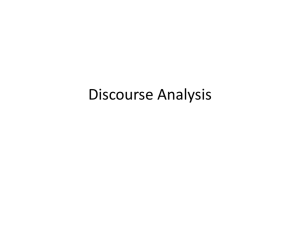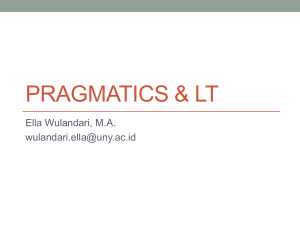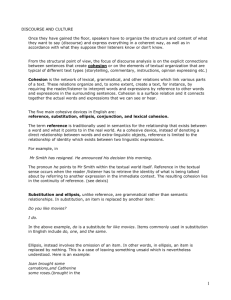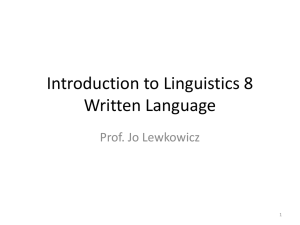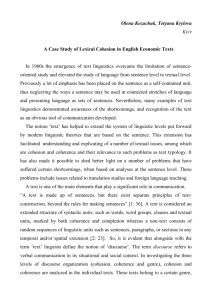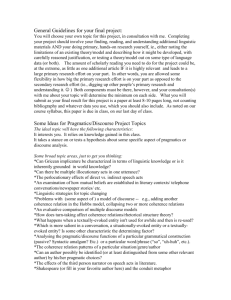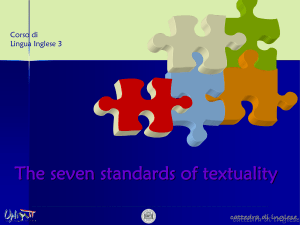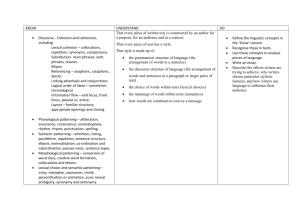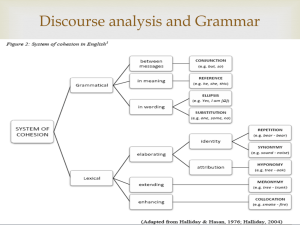COHESION AND COHERENCE Ella Wulandari, M.A.
advertisement
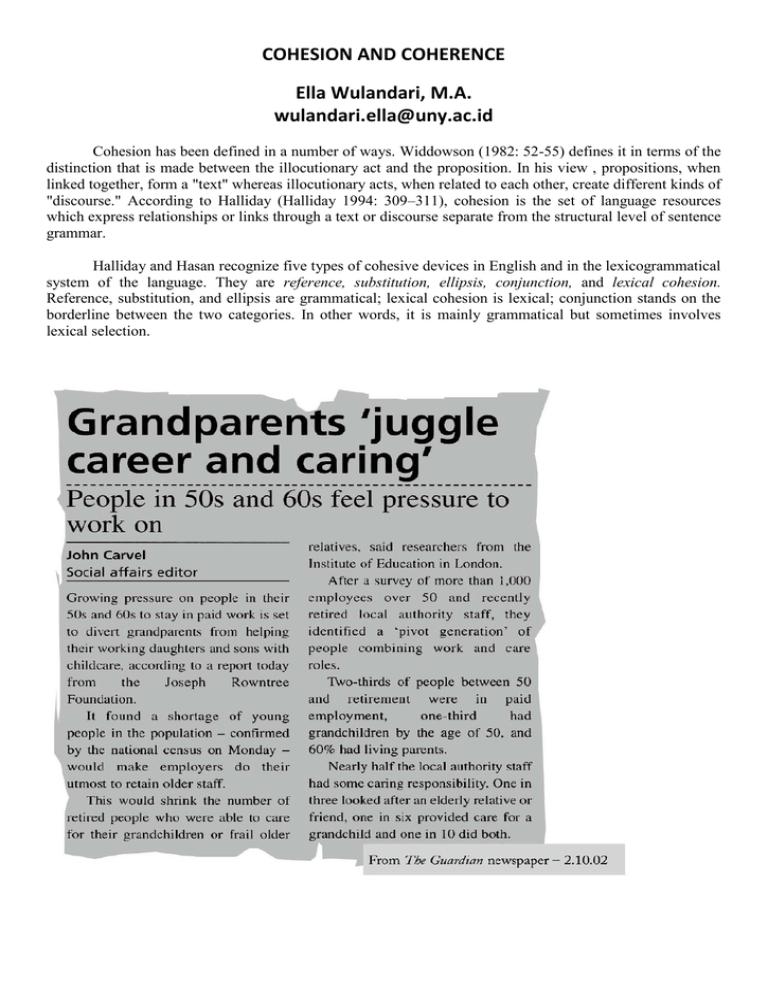
COHESION AND COHERENCE Ella Wulandari, M.A. wulandari.ella@uny.ac.id Cohesion has been defined in a number of ways. Widdowson (1982: 52-55) defines it in terms of the distinction that is made between the illocutionary act and the proposition. In his view , propositions, when linked together, form a "text" whereas illocutionary acts, when related to each other, create different kinds of "discourse." According to Halliday (Halliday 1994: 309–311), cohesion is the set of language resources which express relationships or links through a text or discourse separate from the structural level of sentence grammar. Halliday and Hasan recognize five types of cohesive devices in English and in the lexicogrammatical system of the language. They are reference, substitution, ellipsis, conjunction, and lexical cohesion. Reference, substitution, and ellipsis are grammatical; lexical cohesion is lexical; conjunction stands on the borderline between the two categories. In other words, it is mainly grammatical but sometimes involves lexical selection. Text cohesion is achieved by a number of ways: In a nutshell, cohesive devices help to bind elements of a text together so that we know what is being referred to and how the phrases and sentences relate to each other. A cohesive text is possible though it is not coherent, like the following example: For a text to have coherence, it needs to have some kind of internal logic which the reader can follow with or without the use of prominent cohesive devices. When a text is coherent, the reader can understand a least two things: In short, coherence is achieved by how a writer sequences information, or constructs a text. This brings the issue of genre in which different genres provoke different writing (in order to satisfy the expectations of the discourse community that is being written for). When the writer strays outside text construction norms, or does not conform with the way a specific genre is written in the given discourse community, coherence is at risk. Still, the choice to follow or not the genre norms is up to writers.

